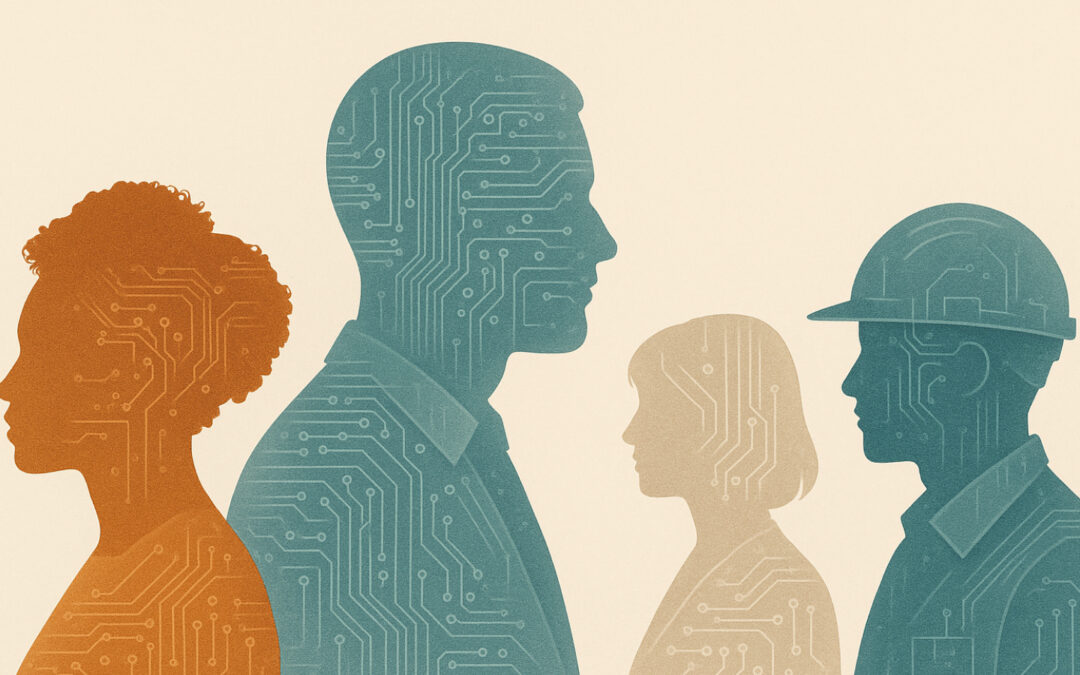We’re now two years into the mass adoption of generative AI, and the data paints a fascinating—and uneven—picture of who’s actually using it. Beneath the hype cycle, a quiet stratification is emerging: some organizations are integrating AI deeply into their workflows, while others remain stuck in experimentation mode.
Two recent studies—OpenAI’s How People Are Using ChatGPT and Anthropic’s September 2025 Economic Index—help clarify where the real traction lies. Together, they reveal a simple truth: the AI revolution isn’t being driven by futurists or technologists. It’s being driven by knowledge workers—teachers, analysts, administrators, small business owners—who are using AI to do what they were already doing, just faster and better.
According to OpenAI’s analysis of more than one million ChatGPT sessions, nearly 80% of all usage now falls into three categories: writing, seeking information, and practical guidance. These aren’t the splashy “AI-built-my-startup” stories that make headlines—they’re the everyday tasks that define real work. In professional contexts, writing and editing alone account for roughly 42% of usage, underscoring AI’s role as an assistant rather than a replacement.
How People Use ChatGPT
Analysis of 1M+ ChatGPT sessions reveals focus on everyday knowledge work
Automation vs. Augmentation
Percentage of AI usage following directive/automation patterns
Individual Users
More augmented, collaborative use
Enterprise Users
More automated, directive use
Key Insight: Enterprises show higher automation rates (77% vs 50%), suggesting organizations are moving beyond experimentation toward structured implementation.
For educators, that might mean drafting rubrics or lesson plans; for nonprofit staff, writing donor communications; for small businesses, producing marketing copy or documentation. The pattern is clear: AI has become a general-purpose accelerant for cognitive labor.
But not everyone is accelerating equally. Anthropic’s Economic Index—based on millions of interactions with Claude.ai and its enterprise API—finds that AI adoption is highly concentrated in wealthier regions and knowledge-based sectors. The U.S. leads with 40% of employees using AI at work, double the rate of 2023. Yet even within the U.S., adoption varies dramatically: Washington, D.C. and Utah lead per capita usage, while much of the country trails far behind.
Globally, the divide is even sharper. Singapore’s AI usage is 4.6 times higher than expected for its population; Canada’s is nearly 3x; by contrast, India’s usage is only 0.27x, and Nigeria’s just 0.2x. The Anthropic report puts it bluntly: “AI usage is geographically concentrated.”
This inequality isn’t just about access to technology—it’s about readiness to use it well. High-adoption regions and organizations tend to have several things in common: strong digital infrastructure, well-organized data, and workforces already comfortable with information-based tasks. They also tend to use AI more collaboratively—augmenting human effort—while lower-adoption regions lean toward automation, delegating entire tasks to the model.
That pattern may sound subtle, but it has big implications. As Anthropic’s researchers note, higher-use economies show “less automated, more augmented” use of AI. In other words, the more integrated AI becomes, the more people use it as a partner rather than a proxy. That kind of adoption deepens learning and innovation rather than displacing it.
At the enterprise level, the divide shows up in how AI is deployed. Among organizations using Anthropic’s API—companies embedding Claude directly into their systems—77% of usage shows automation patterns, compared to just 50% among individual users. The lesson here is that enterprises are beginning to move beyond casual experimentation toward structured implementation. But they’re also running into new constraints: the need for clean data, well-defined context, and governance frameworks that let AI operate responsibly inside organizational systems.
Taken together, these reports suggest that we’re entering a new stage of AI diffusion—one defined not by capability, but by context. The technology is broadly available, but its benefits accrue to those who can surround it with the right structure: processes, data, and people who understand how to wield it effectively.
This dynamic mirrors the early internet era. The organizations that built websites in 1996 weren’t necessarily smarter or richer—they just had the right combination of curiosity, infrastructure, and institutional flexibility. A generation later, those same organizations are the ones that reaped the compounding advantages of early digital maturity.
The same will be true for AI. Today’s early adopters are building workflows, data pipelines, and institutional muscle memory that will separate the competent from the lagging in just a few years.
At Quarterdeck, we’re seeing this transition firsthand. In education, nonprofits, and small enterprises alike, the conversation has shifted from “Should we use AI?” to “How do we use it responsibly and effectively?” That’s a good sign. It means the experimentation phase is ending—and the real work is beginning.
Because the story of AI adoption isn’t about the technology itself. It’s about who’s ready to make it useful.
